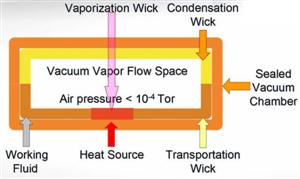Sapphire's Ultimate HD 3850 and Atomic HD 3870
Sapphire Atomic Radeon HD3870

The Atomic HD 3870's packaging is the kind of stuff that will get you stopped in airports and public places, as silver briefcases with day-glo atoms might send out the wrong message. Seriously, the briefcase concept is a great way to showcase Sapphire's high-end product and it prominently advertises their gaming-oriented Atomic website. The sticker used for "HD 3870" probably indicates that we will see the case used again for future Atomic branded products as well. Our only concern with the packaging is that once the card is installed, what is there left to do with the metal briefcase? More clutter for the lab or home-office, we suppose, but first impressions do count and Sapphire wins in this department.
Rather than advertise the features on the case, an overlay inside quickly lists the main selling points of the Atomic HD 3870: pre-overclocked core and memory speeds, 512MB GDDR4 memory, and Vapor-X cooling. Unlike the reference model that ATI originally displayed, the Atomic HD 3870 does not require dual-slot cooling, using a single-slot solution based on Vapor Chamber Technology (VCT) from Microloops. In principle, VCT is not unlike the heatpipes we've seen used time and again on other graphic cards and motherboards. In both cases, heat vaporizes a fluid within a sealed chamber, the resulting gas of which moves to a cooler region where it condenses and releases its heat. The fluid is then returned to the hotter area for re-vaporization and the process repeats itself.
Where the process differs, is that the vapor chamber in a VCT cooler is a vacuum vessel with wicks lining the walls that facilitate the movement of the working fluid, in this case, water. In effect, heat transmission is both bi-directional and planar, and thus much more efficient that a basic heat-pipe, which is unidirectional and linear. VCT coolers can be made into any shape with a maximum size of 400mm x 400mm, and only need a thickness of between 3.5mm and 4.2mm. Thus, a more efficient yet lighter weight and smaller footprint GPU cooler is born. Sapphire has partnered with Microloops for future products as well.
The Vapor-X chamber is really what makes the Atomic HD 3870 so different from the rest, changing the reference dual-slot design into a quiet, single-slot card with pre-overclocked speeds of 825 MHz for the GPU (over a default 777 MHz) and 1200 MHz for the memory (default of 1126 MHz). The rest of the card is essentially the same with two DVI and one S-Video output, a 6-pin power connector, and two CrossFireX connectors along the top. Although the HD 3850 and HD 3870 cards are PCI-Express 2.0 graphics cards, they still function perfectly in PCIe 1.1 slots.
Aside from the card, the bundle has a few surprises of its own. While the accompanying media remains the same as what we found with the Ultimate HD 3850, the assortment of cables included a 9-foot HDMI cable, as well as two cold cathodes that can be used to jazz up your PC. The HDMI cable alone runs for $30-40 U.S., which makes this a welcome addition to what is looking like an early winner from Sapphire.


















